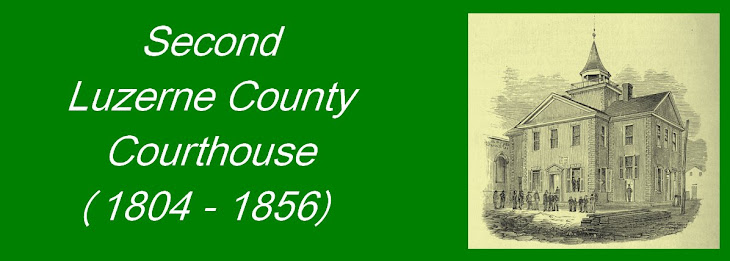Back to Courthouses
In 1801, Lawrence Myers, Eleazar Blackman, and Thomas Wright, county commissioners, procured the plan of a court-house, in Fredericksburg, Maryland, for which they paid $17.06.
The old log court-house was removed by Joseph Hitchcock, the contractor for the construction of the new edifice, but it continued to be occupied by the courts until 1804, when the new building was completed, and the old one was converted into the Wilkes-Barre Academy. This new structure, in the form of a cross, declared by the commissioners to be " most elegant and convenient," was erected on the site of the old log court house. Including furniture and fixtures, it cost $9356.06. There were 32i gallons of whiskey used at the raising of this building ; a fact which demonstrates either the great capacity of the people of that day for ardent spirits, or else the presence of a large number of consumers.
The bell, the tones of which have quickened the pulsations of the hearts of so many prisoners, of plaintiffs, and of defendants, was cast in Philadelphia, by George Hed-derly, in 1805. In the cellar of this building, at an early period, the lovers of beefsteak found a good market. Within its walls dancing was taught by exquisite professors of the art, and holy men of God proclaimed the doctrines of divine truth. For more than half a century it was used for judicial purposes.
Judge Conyngham in his address, in 1856, delivered on the occasion of the laying of the corner stone of the third court house, remarked, " Upwards of fifty years seems a long period for litigation and dispute among an active and a growing people; yet, it is believed, that the scales of Justice have been balanced as evenly within these walls as human knowledge and human frailty would allow."
Tuesday, February 24, 2009
Subscribe to:
Posts (Atom)
